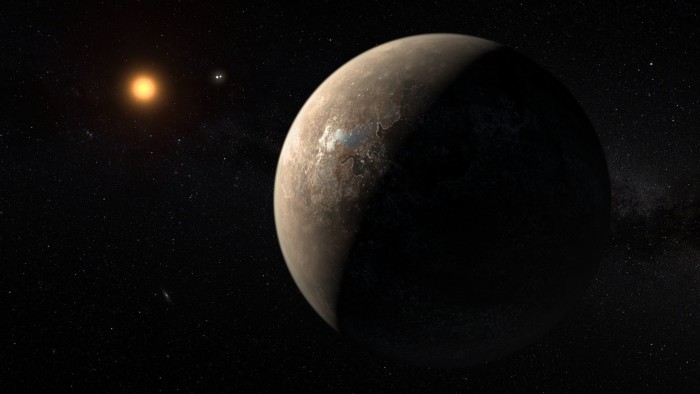Earth finds a neighbour just 4 light years away

Simply sign up to the World myFT Digest -- delivered directly to your inbox.
For decades, astronomers have searched the skies for planets in our galaxy similar to Earth that could be home to extraterrestrial life.
On Wednesday, a team of European scientists revealed they were closer to this goal than ever before, as they announced the discovery of a Earthlike body orbiting Proxima Centauri, the nearest star to the Sun — making it the closest planet outside the solar system that could harbour life.
Although more than 3,000 so-called exoplanets have been identified since 1995, some potentially habitable, the proximity of the new planet, named Proxima Centauri B, makes it the best place to search for life. It lies just over four light-years away from our solar system.
Details of the groundbreaking discovery by a team from the Munich-based European Southern Observatory, which took nine years, will be revealed on Friday in the scientific journal Nature.
“There have been previous claims of other planets [orbiting Proxima Centauri] so we had to be extra careful . . . to verify that nothing else could be causing the signal,” said Guillem Anglada-Escudé, a lecturer at the school of physics and astronomy at Queen Mary University of London, who led the international team. “But the significance of the detection is sky-high, there’s no doubt it’s there. Our conclusion is that we have found a planet.”
To be able to support life as we know it, a planet must be roughly Earth-sized and sit in a “Goldilocks” habitable zone, meaning it must be just the right distance from its star for its surface temperature to support liquid water. The scientists believe Proxima Centauri B has a temperature range of -30 to +30C — making it very similar to Earth.
One difference is that Proxima Centauri B is only 7m km from its star — just 5 per cent of the distance from Earth to the Sun. But because its star — a red dwarf — is much smaller and cooler than the Sun, the scientists believe the planet could still hold liquid water, and therefore support life.
“From simulations we could infer that this planet is most likely a terrestrial planet which means it has a surface . . . [and] from what we know there is a probability that it has water,” said Ansgar Reiners, professor at the institute for astrophysics at the Georg-August-Universität Göttingen in Germany. “The planet is so close, closer than any other system we know, so detailed investigating is easier to do in future.”
However, Red dwarfs emit much higher levels of high-energy X-ray radiation than stars like the Sun and much less light in the visible spectrum. Scientist are unsure whether Proxima Centauri B has a magnetic field that would help protect it from damaging radiation.
The conditions on the surface would make it difficult for most types of Earthlike, carbon-based life forms to survive, however the research term said this was not a “showstopper”.
“What is more interesting is the history of the planet — whether in the early ages, the young ages, of this planet the star was so active, and the star emitted so much high-energy radiation, that it blew away the atmosphere and may have blown away the water also,” said Ansgar Reiners, a professor at the University of Göttingen’s Institute of Astrophysics in Germany.
To spot Proxima Centauri B, researchers based at the ESO’s observing sites in Chile’s Atacama Desert used a proxy measure known as a “wobble” — a tiny vibration in Proxima Centauri caused by the planet’s gravitational pull.

Efforts will now focus on learning more about the new planet’s history and climate by capturing an image through a telescope. But it has already become the prime target in the search for extraterrestrial life, according to the team.
“Many exoplanets have been found and many more will be found, but searching for the closest potential Earth-analogue and succeeding has been the experience of a lifetime for all of us,” said Mr Anglada-Escudé. “The search for life on Proxima B comes next.”
Comments